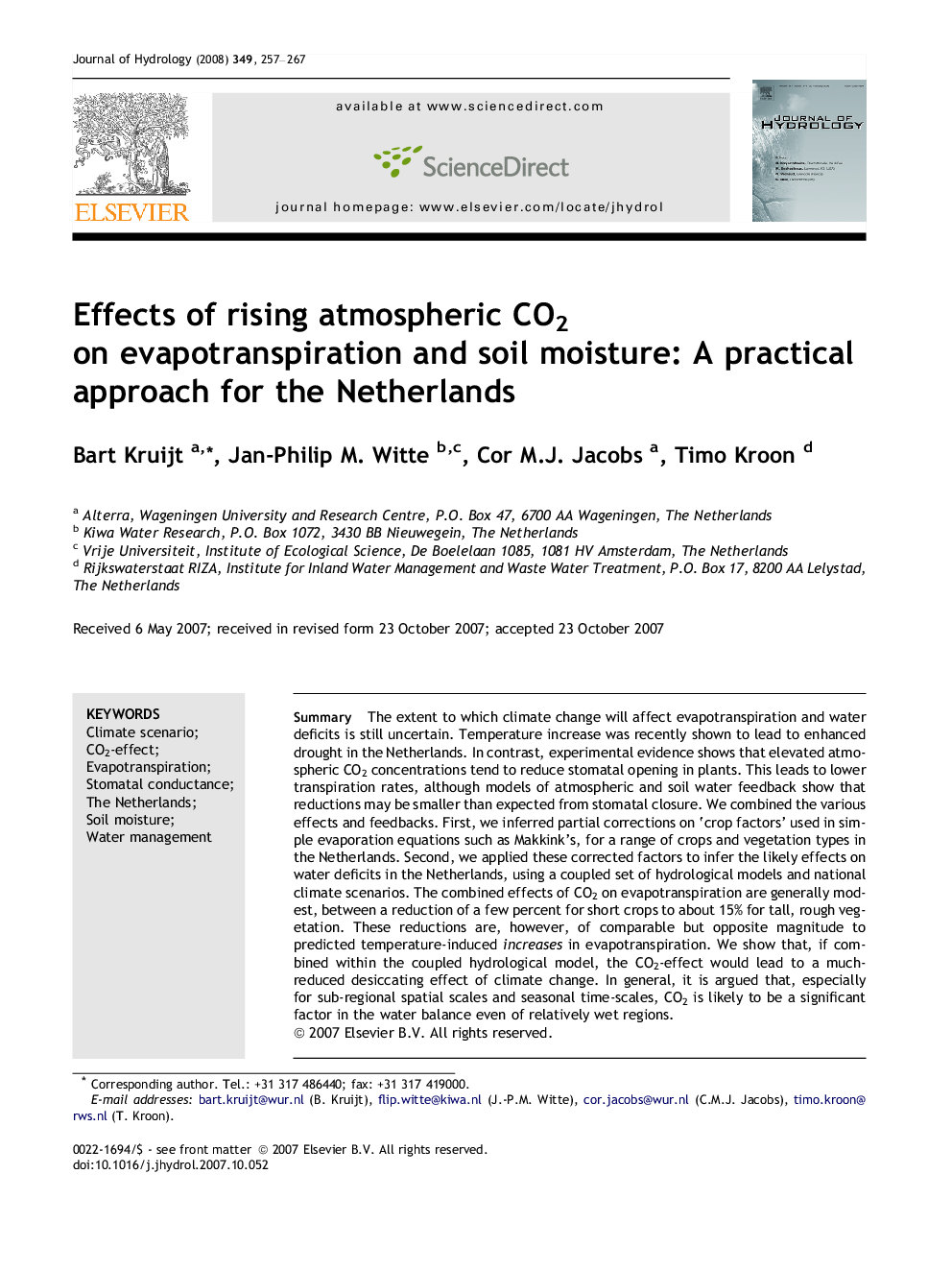| Article ID | Journal | Published Year | Pages | File Type |
|---|---|---|---|---|
| 4579539 | Journal of Hydrology | 2008 | 11 Pages |
SummaryThe extent to which climate change will affect evapotranspiration and water deficits is still uncertain. Temperature increase was recently shown to lead to enhanced drought in the Netherlands. In contrast, experimental evidence shows that elevated atmospheric CO2 concentrations tend to reduce stomatal opening in plants. This leads to lower transpiration rates, although models of atmospheric and soil water feedback show that reductions may be smaller than expected from stomatal closure. We combined the various effects and feedbacks. First, we inferred partial corrections on ‘crop factors’ used in simple evaporation equations such as Makkink’s, for a range of crops and vegetation types in the Netherlands. Second, we applied these corrected factors to infer the likely effects on water deficits in the Netherlands, using a coupled set of hydrological models and national climate scenarios. The combined effects of CO2 on evapotranspiration are generally modest, between a reduction of a few percent for short crops to about 15% for tall, rough vegetation. These reductions are, however, of comparable but opposite magnitude to predicted temperature-induced increases in evapotranspiration. We show that, if combined within the coupled hydrological model, the CO2-effect would lead to a much-reduced desiccating effect of climate change. In general, it is argued that, especially for sub-regional spatial scales and seasonal time-scales, CO2 is likely to be a significant factor in the water balance even of relatively wet regions.
